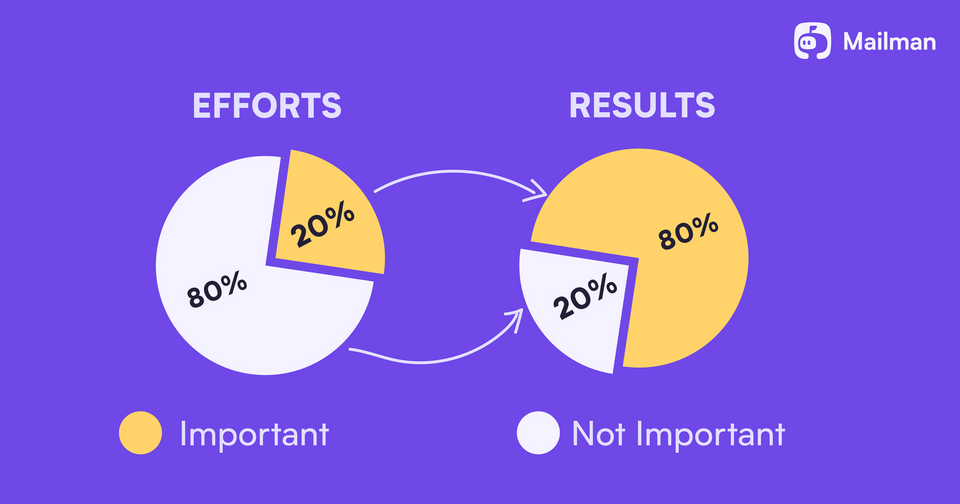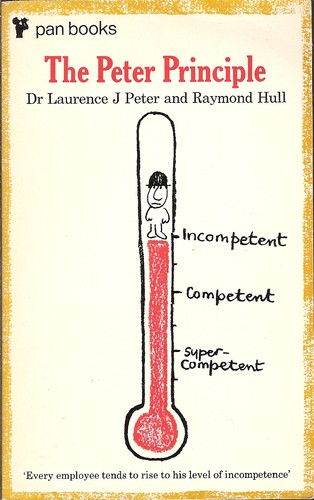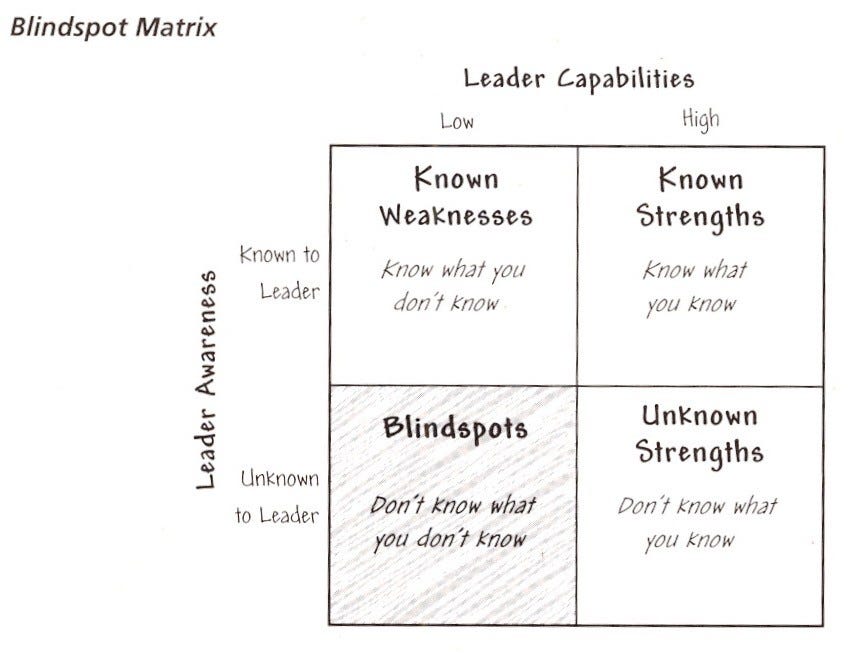Leadership models IV: the Pareto Principle, the Peter Principle, the Rumsfeld Matrix, Servant Leadership and Pygmalion Effect, and Goleman's Emotional Intelligence Model
Marton Trencseni - Fri 19 May 2023 - Leadership
Introduction
This is the fourth article in my series on useful mental models in leadership and self-management:
- Leadership models I: Iceberg Model, Six Thinking Hats, Trust Equation, Circle of influence, OODA Loop
- Leadership models II: Growth Mindset, Eisenhower Matrix, Tuckman Model, Cynefin Framework, SCARF Model
- Leadership models III: First Principles Thinking
In this post, I will describe the Pareto Principle, the Peter Principle, the Rumsfeld Matrix, Servant Leadership and Pygmalion Effect, and finally Goleman's Emotional Intelligence Model.
Pareto Principle
The Pareto Principle, also known as the 80/20 Rule, was introduced by Italian economist Vilfredo Pareto in the late 19th century. Pareto observed that roughly 80% of the land in Italy was owned by 20% of the population. He developed the principle after observing that 20% of the pea pods in his garden contained 80% of the peas.
The principle has since been applied to a variety of fields, including business and productivity, where it is often interpreted as follows:
- 80% of outcomes (outputs) come from 20% of causes (inputs).
- 80% of results come from 20% of effort.
- 80% of a company's profits come from 20% of its customers or products.

It's important to note that the 80/20 ratio is not fixed; the distribution could just as well be 90/10 or 70/30, depending on the situation. The key idea is that a minority of causes, inputs, or effort often leads to a majority of the results, outputs, or rewards. Some practical applications of the Pareto Principle:
- Business: In terms of customers, a common rule of thumb is that 80% of a company's revenue comes from 20% of its customers. Therefore, it can be beneficial to focus on the needs and preferences of that 20%.
- Productivity: When it comes to personal productivity, the Pareto Principle suggests that 20% of our work activities will account for 80% of our results. Therefore, identifying and focusing on these high-impact tasks can significantly improve productivity.
- Quality control: The Pareto Principle is also used in quality control, where it's known as the Pareto Chart. This tool suggests that by resolving the 20% of the issues causing 80% of the problems, overall quality can be significantly improved.
The Pareto Principle encourages individuals and organizations to identify and focus on the inputs that lead to the majority of their results, thereby enhancing efficiency and effectiveness.
Peter Principle
The Peter Principle is a concept in management theory formulated by Dr. Laurence J. Peter in his 1969 book, "The Peter Principle." This principle suggests that in a hierarchical organization, employees tend to rise to their level of incompetence. Here are its core tenets:
-
Promotion Based on Current Performance: The principle asserts that employees in a hierarchy are typically promoted based on their performance in their current role, rather than their potential to perform in the promoted role. This is based on the assumption that performance in one role directly translates to potential performance in a higher role.
-
Rise to the Level of Incompetence: As employees are promoted based on their performance, they will continue to rise through the ranks until they reach a position where they no longer perform competently. At this level, they do not have the skills or abilities to perform effectively, and thus their incompetence becomes evident.
-
Stagnation in Incompetent Positions: Once an employee has risen to a level of incompetence, they typically stay in that position. This is because their poor performance in the new role prevents further promotions, but it's not poor enough to warrant demotion or dismissal.
-
Organizational Inefficiency: The accumulation of employees in roles in which they are incompetent can lead to inefficiencies and ineffectiveness within the organization.
The Peter Principle is a reminder for organizations to consider potential capability and suitability for the future role when making promotion decisions, not just performance in a current role.

Rumsfeld Matrix
The Rumsfeld Matrix was popularized by former United States Secretary of Defense, Donald Rumsfeld, during a news briefing in 2002, although the concept has roots in the field of epistemology. The Rumsfeld Matrix consists of four categories of knowledge:
-
Known Knowns: These are things we know that we know. They represent our existing knowledge, facts, or information we are aware of and understand.
-
Known Unknowns: These are things we know that we don't know. They represent the gaps in our knowledge, areas where we are aware that we lack information or understanding.
-
Unknown Knowns: These are things we don't know that we know. They represent tacit knowledge or information we possess but may not be consciously aware of, such as unconscious biases, ingrained habits, or learned behaviors.
-
Unknown Unknowns: These are things we don't know that we don't know. They represent the areas of complete ignorance, where we are not even aware of our lack of knowledge or understanding.
The purpose of the Rumsfeld Matrix is to encourage individuals and organizations to consider and explore the different aspects of knowledge, helping them to identify blind spots, ask better questions, and make more informed decisions.

Servant Leadership
Servant Leadership is a leadership philosophy in which the primary goal of the leader is to serve others. This is starkly different from traditional leadership where the leader's main focus is on the thriving of their company or employees. A Servant Leader shares power, puts the needs of the employees first and helps people develop and perform as highly as possible.
This concept was first coined by Robert K. Greenleaf in his 1970 essay, "The Servant as Leader." Greenleaf suggested that the best leaders were servants first, and the key tools for a servant leader are listening, empathy, healing, awareness, persuasion, conceptualization, foresight, stewardship, and commitment to the growth of people and building community.
Here are the core tenets of Servant Leadership:
- Listening: Leaders have traditionally been valued for their communication and decision-making skills. Although these are also important skills for the servant-leader, they need to reinforce these with a deep commitment to listening intently to others.
- Empathy: The servant-leader strives to understand and empathize with others. Workers may be considered not only as employees, but also as people who have complex personal lives.
- Healing: Servant-leaders recognize that they also have an opportunity to help make whole those with whom they come in contact.
- Awareness: General awareness, and especially self-awareness, strengthens the servant-leader.
- Persuasion: Servant-leaders rely on persuasion, rather than positional authority in making decisions.
- Conceptualization: Servant-leaders nurture their abilities to dream great dreams.
- Foresight: Foresight is a characteristic that enables servant-leaders to understand lessons from the past, the realities of the present, and the likely consequence of a decision in the future.
- Stewardship: Servant leadership, like stewardship, assumes first and foremost a commitment to serving the needs of others.
- Commitment to the Growth of People: Servant-leaders believe that people have an intrinsic value beyond their tangible contributions as workers.
- Building Community: The servant-leader senses that much has been lost in recent human history as a result of the shift from local communities to large institutions as the primary shaper of human lives.
The overall goal of Servant Leadership is to build a more just, caring and sustainable world.

Pygmalion Effect
The Pygmalion Effect is a psychological principle that describes how our expectations about the abilities of others can influence their actual performance. It was first identified by psychologist Robert Rosenthal and school principal Lenore Jacobson in the late 1960s.
Here are the main aspects of the Pygmalion Effect:
- Expectation Influence Performance: If you have high expectations of someone, they are likely to perform better. Conversely, if you have low expectations of someone, they are likely to perform poorly. This happens because our expectations subtly communicate what we think the other person is capable of, affecting their self-confidence and effort.
- Self-fulfilling Prophecy: The Pygmalion Effect is a type of self-fulfilling prophecy. When we believe someone will behave in a certain way, we may treat them in ways that induce them to behave as expected, thereby confirming our initial expectations.
- Application in Leadership and Education: The Pygmalion Effect is especially relevant in leadership and educational settings. Leaders or teachers who believe in their team members' or students' abilities to succeed can inspire those individuals to meet those expectations. However, if a leader or teacher has low expectations, it may negatively affect performance.
- Importance of Positive Expectations: The Pygmalion Effect underscores the power of positive expectations. By showing others that you believe in their potential, you can motivate them to reach their goals, improving individual and collective performance.
In summary, the Pygmalion Effect demonstrates the power of expectation and the role it plays in performance. It's an important concept to understand for anyone in a leadership, teaching, or mentoring position.
Goleman's Emotional Intelligence Model
Goleman's Emotional Intelligence Model was proposed by psychologist and science journalist Daniel Goleman in his 1995 book "Emotional Intelligence: Why It Can Matter More Than IQ." The model outlines five key components of emotional intelligence that are crucial to leadership, personal development, and interpersonal effectiveness.
Here are the core components of Goleman's model:
- Self-Awareness: This refers to the ability to recognize and understand your own emotions, strengths, weaknesses, values, and drives, as well as their impact on others. Self-awareness also includes recognizing your own emotional reactions to people or situations around you.
- Self-Regulation (or Self-Management): This is about managing your internal states, impulses, and resources. This includes being able to control or redirect disruptive emotions and adapting to changing circumstances. Essentially, it’s about managing your emotions and keeping them in check.
- Motivation: This refers to being driven to achieve for the sake of achievement. Motivation includes your personal drive to improve and achieve, commitment to your goals, initiative, or readiness to act on opportunities, and optimism and persistence in pursuing goals, even if things don’t go as planned.
- Empathy: This is about considering other people's feelings, especially when making decisions. It involves understanding the emotional makeup of other people and treating them according to their emotional reactions.
- Social Skills (or Relationship Management): This refers to managing relationships to move people in the desired direction. Social skills involve the ability to influence, to communicate clearly, to inspire and influence others, to manage conflict, to foster cooperation, and to build and maintain good personal relationships.
Goleman’s model underlines that emotional intelligence is as important, if not more important, than cognitive abilities for personal and professional success, especially in leadership roles.
Conclusion
This concludes my series on mental models useful in Leadership.